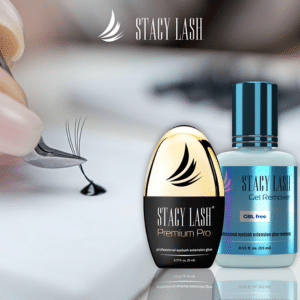Table of Contents
The quest for perfect eyelash extensions often hinges on a critical component: lash glue. Selecting the right eyelash glue is paramount to achieving a captivating look. With myriad options available, it can be overwhelming to find the best lash glue suited to your needs. This guide aims to demystify the process, offering professional insights into the selection, application, and removal of lash glue.

Importance of Quality Lash Glue
Quality lash glue is the foundation of any successful eyelash extension application. It ensures the lashes stay securely in place, withstand environmental factors, and do not cause irritation. Inferior glues can lead to lashes falling out prematurely, discomfort, and even allergic reactions. Therefore, investing in the best lash glue is essential for lash professionals to achieve impeccable results.
Types of Lash Glue
Understanding the different types of lash glue available can significantly impact your choice. Here are the most common types:
- Strong Glue: This is a popular type for professional eyelash extensions due to its strong bonding capabilities and quick drying time. However, it can cause irritation for sensitive eyes.
- Sensitive Glue: Often used when you welcome a client with personal sensitivities, this type has reduced level of fumes and perfect for beginners.
- Volume: Known for its perfect formula, suitable for Volume lashing directly, 2D, 3D or any-D you might have in mind.
- Speedy: Ideal for seasoned and skilled professionals, who prefer fast-drying glues for time-saving.
Key Ingredients to Look For & Avoid
When selecting the best lash glue, it’s important to consider the ingredients. Here are key ingredients to look for:
- Cyanoacrylate: Ensures strong adhesion and fast drying time.
- Carbon Black: Provides a deep black color to blend seamlessly with natural lashes. If your client wants colored lashes, clear glue may be a better option as it lacks this pigment.
Here are key ingredients to avoid:
- Latex: Should be avoided, as known as allergen and irritant.
- Formaldehyde: Always choose a formaldehyde-free option to guard your clients from potential health risks and allergic reactions.
Tips for Selecting the Right Glue
Choosing the best lash glue depends on several factors, including your experience level, client’s eye sensitivity, and the type of lashes you’re applying. Here are some tips to guide your selection:
- Consider Your Skill Level: Beginners might prefer a slower drying glue to allow more time for adjustments. Professionals often opt for quick-drying options to speed up the application process.
- Client Sensitivity: If your client has sensitive eyes, look for milder formulas, formaldehyde-free, and low-fume glues.
- Match Glue to Lash Type: Ensure the glue is compatible with the type of lashes you are using—whether they are individual extensions, or Volume.
- Check Humidity Requirements: Every glue has temperature and humidity range in which it works best. Check your room indicators comply with it.
- Adhesion Strength and Longevity: For a long-lasting hold, choose glues that are renowned for their strong adhesion and durability.
Application and Removal Tips
Proper application and removal of lash glue are crucial to maintaining healthy lashes and ensuring the longevity of extensions. Here are some professional tips:
Application Tips:
- Prep the Lashes: Ensure your client’s natural lashes are clean and free of oils. Use a lash primer if necessary.
- Apply the Eye Pads: Secure you client eyes during the procedure. Ensure their eyes remain tightly closed.
- Placement is Key: A small amount of glue goes a long way. Too much glue can lead to clumping and discomfort. Attach the extension close to the lash line but not touching the skin to avoid irritation.
- Allow Time to Dry: Use Bonder to help the glue fully cure and allow your client to open their eyes.
How to Remove Lash Glue:
- Use a Lash Glue Remover: Invest in a quality lash glue remover specifically designed for the type of glue you are using. Gel removers are ideal for precise application.
- Gentle Process: Apply the lash remover with a cotton swab or applicator brush, allowing it to sit for the recommended time to break down the adhesive.
- Avoid Tugging: Gently slide the extensions off without pulling to prevent damage to the natural lashes.
- Clean Residue: Use a mild cleanser to remove any remaining adhesive from your client’s natural lashes.
Conclusion
Choosing the best lash glue is a pivotal step in achieving flawless eyelash extensions. By understanding the different types of glues, key ingredients, and application techniques, you can ensure a secure, comfortable, and long-lasting result to your customer. Prioritizing quality and suitability in your lash glue selection will elevate your craft and ensure the health and beauty of your client’s natural lashes.
Read More on KulFiy
Kylie Cosmetics Wiki, Founder, Net Worth, Share Price, Investors, Logo, Product
Kylie Jenner Net Worth, Cars, Age, Height, Weight, Son, Kids, Birthday, Biography
